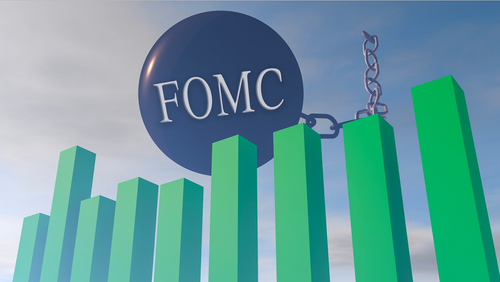
Global | Monetary Policy & Inflation | US

Global | Monetary Policy & Inflation | US
We standardise WoW price changes across different markets to allow for cross-market comparisons.
The US dollar was softer while US Treasury yields moved lower over the past week (Charts 1 and 2). Federal Reserve (Fed) Chair Jerome Powell validated market suspicions. He announced that a move to 50bp hikes ‘may come as early as the December meeting’. This is part of a risk management practice designed to allow monetary policy lags to play out and avoid overtightening. However, further afield, Chair Powell and markets were at odds. Chair Powell announced an increase in the terminal Fed funds rate (FFR) projection in the December SEP while the market implied terminal rate slipped lower. He also outlaid his framework going forward. In short, employment would have to slow to closer to a 100,000 increase in monthly labour supply for the labour market to ease. Friday’s non-farm payroll (NFP; +263,000) fast proved cuts to the FFR are unlikely to come soon.
This article is only available to Macro Hive subscribers. Sign-up to receive world-class macro analysis with a daily curated newsletter, podcast, original content from award-winning researchers, cross market strategy, equity insights, trade ideas, crypto flow frameworks, academic paper summaries, explanation and analysis of market-moving events, community investor chat room, and more.
We standardise WoW price changes across different markets to allow for cross-market comparisons.
The US dollar was softer while US Treasury yields moved lower over the past week (Charts 1 and 2). Federal Reserve (Fed) Chair Jerome Powell validated market suspicions. He announced that a move to 50bp hikes ‘may come as early as the December meeting’. This is part of a risk management practice designed to allow monetary policy lags to play out and avoid overtightening. However, further afield, Chair Powell and markets were at odds. Chair Powell announced an increase in the terminal Fed funds rate (FFR) projection in the December SEP while the market implied terminal rate slipped lower. He also outlaid his framework going forward. In short, employment would have to slow to closer to a 100,000 increase in monthly labour supply for the labour market to ease. Friday’s non-farm payroll (NFP; +263,000) fast proved cuts to the FFR are unlikely to come soon.
Markets ushered their December European Central Bank (ECB) expectations in line with those for the Fed following November European inflation data. That is, markets now expect the ECB to deliver a 50bp hike on 15 December, a day after the Fed.
And, by the turn of the week, G7 sanctions on Russian oil kicked in (at $60/bbl). From today, Western shipping and insurance companies are prohibited from handling Russian oil sold above the price cap. However, at current prices (~$50), the sanctions mean business as usual for Western Russian oil exports. Only ESPO (Kozmino) oil is above the cap price, though this exits the country in the East with China as one destination for the flow. Meanwhile, OPEC+ kept policy steady. The organisation will next meet on 1 February for a monitoring committee while a full meeting is scheduled for 3-4 June.
Focusing on China, Shanghai relaxed Covid-19 testing rules. They join cities including Beijing, Shenzhen and Guangzhou. Most will not require PCR results for access to public transit and other shared areas. Easing zero-Covid restrictions has seen CNY (USD/CNY: +1.6% WoW) recover from extreme weakness and China-related markets bounce higher (Chart 3).
The pre-FOMC meeting blackout has started. The week is light of data, too. The most important of those that are released are: ISM Services PMI (Monday) – Dominique sees a further decline from October but an overall score still above 50; PPI (Friday) – she will be looking for a continued price increase of semiconductors as a sign that cost pressures are not abating; University of Michigan Consumer Confidence (Friday) – she agrees with consensus with a sideways move, consistent with the strong labour market the recent, and likely transitory, stabilisation of inflation.
Outside the US, the Reserve Bank of Australia (RBA; Tuesday) and Bank of Canada (BoC; Wednesday) will discuss the level of interest rates. Focusing on Australia, Ben expects the RBA to hike by 25bp to 3.1%. Since the last meeting in early November, inflation has remained way above target. And while it appears to have peaked, the RBA will likely want to see more evidence that the disinflation process has set in before slowing the hiking cycle. Also, Australia’s labour market remains exceptionally tight; unemployment is the lowest in 50 years while wage growth has surpassed 3% for the first time since Q1 2013. Looking forward, our indices for Australian inflation, unemployment and wage growth show that the peak inflationary pressures have passed. Ben also expects the BoC to hike by 25bp (to 4%). Two things matter for the BoC at this meeting: 1) core inflation momentum remains to the downside – it did; 2) the labour market has eased – 30 of 41 indicators they consider have ‘recovered’.
Watch Andrew and Dominique discuss the past week, notably Chair Powell’s speech, wage growth numbers and NFP data, and the week ahead. They also discuss whether the Fed could target an inflation rate of 3% going forward.


Spring sale - Prime Membership only £3 for 3 months! Get trade ideas and macro insights now
Your subscription has been successfully canceled.
Discount Applied - Your subscription has now updated with Coupon and from next payment Discount will be applied.